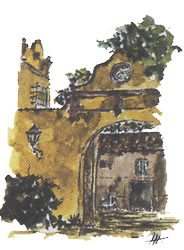ASTM D2574-16 (2024). Standard Test Method for Resistance of Emulsion Paints in the Container to Attack by Microorganisms.
Test accredited by ENAC (Spanish National Accreditation Entity).
This standard indicates a standard procedure for the evaluation of the relative resistance of emulsion paints to attack in container by microorganisms. This test method is designed to challenge paint samples containing a concentration of one or more biocides with a known amount of bacteria to assess the ability of the paints under test to control the contamination. The deterioration of the paint in the container can cause its putrefaction, a decrease in pH, the formation of gas and a decrease in its viscosity. The results of this test should enable the paint manufacturer to select an effective preservative and the preservative supplier to evaluate the different products in use or under development.
In this procedure, paint samples that contain one or more preservatives are inoculated with the two bacteria recommended by the Standard (Pseudomonas aeruginosa and Enterobacter aerogenes). This standard also admits the use of other bacteria such as Bacillus subtilis, or other bacteria agreed with the client. In addition, if a contaminated paint of a type similar to that tested is available, cultures of microorganisms isolated from this paint can be used as inoculum. The samples inoculated with the microorganisms are incubated, and the bacterial recovery or sterility is analyzed after 1, 2, or 3, 5 and 7 days. To evaluate bacterial growth, samples are taken on the indicated days, which must be seeded on agar plates and incubated for a minimum of one week. According to the results obtained, a degree of contamination will be assigned (from 0 to 4). In addition, the presence of swelling of the lid or container, putrefactive or fermentative odors if present, the presence of fibrous structures and notable losses in viscosity, as observed, must be evaluated and reported.
If the samples were sterile after 7 days, the inoculation of the paints with a higher concentration of microorganisms must be repeated, repeating the bacterial recovery analysis after 1, 2, or 3, 5 and 7 days. The test must be continued until growth is obtained, or until a minimum number of at least two confrontation tests (Challenge) have been performed, as agreed with the client.



